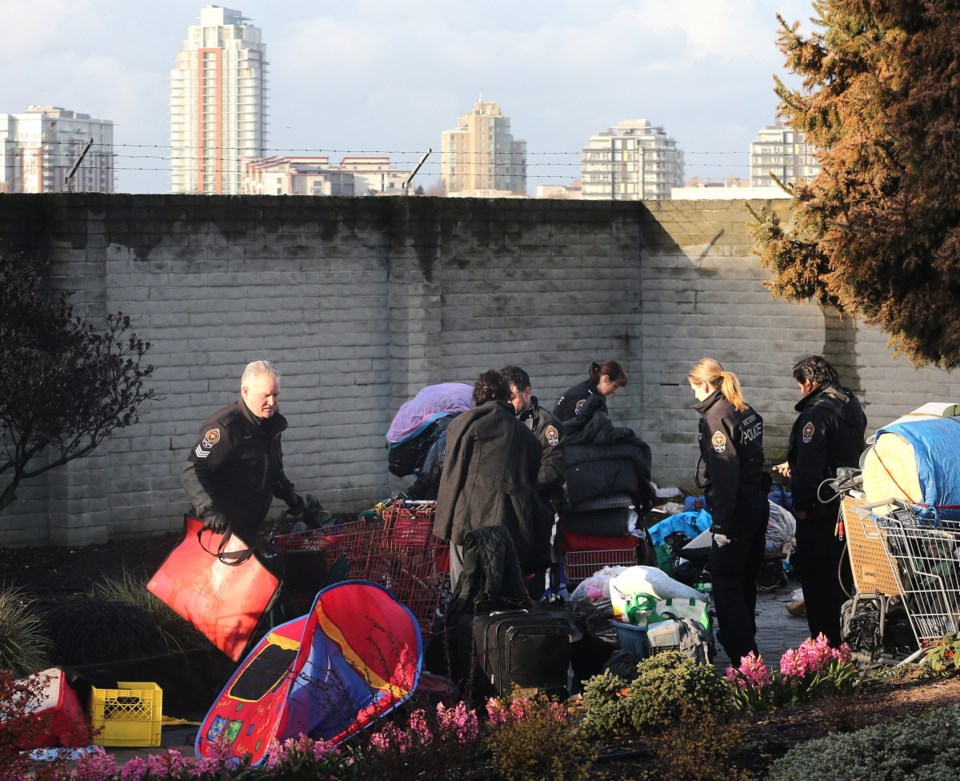Camping in Victoria parks is starting to be a significant drain on police, bylaw and park resources, says a report going to councillors this week.
City bylaw officers estimate several hundred people routinely overnight in city parks and green spaces every year, leading to everything from noise and nuisance complaints to destruction of ecosystems and mounds of trash that have to be hauled away, says the report.
Victoria police estimate that dealing with people “sheltering” in parks cost the department about $400,000 in staff time in 2014.
City bylaw and licensing services pegged their costs at $165,000 — the equivalent of two full-time bylaw officers — while the cost for city parks staff for cleanup and restoration work was estimated at $100,000, not including vehicle or dumping fees, says the report.
The city has been wrestling with the issue of campers in parks since 2009, when the B.C. Court of Appeal ruled that in the absence of available shelter beds, it is unconstitutional to prohibit someone from erecting temporary shelter in a park. The ruling is known as the Adams decision.
In response, the city amended its parks bylaw to allow people to erect tents in parks between 7 p.m. (8 p.m. during daylight savings hours) and 7 a.m.
Now bylaw officers and police routinely conduct patrols to wake people and move them on in the mornings.
In 2014, bylaw officers recorded 1,040 “sheltering” calls, while parks staff had 234, up from 561 and 55, respectively, in 2013. Victoria police recorded at least 1,000 calls related to sheltering activities in parks last year.
“The 2014 data on ‘person stops’ recorded by VicPD members engaged in park patrols identified over 3,700 occasions when police had interactions with one or more persons engaged in sheltering activities,” the report says. “This number was highest in August when 406 occasions were recorded.”
“Sheltering” was most prevalent last year in Beacon Hill, Cridge, Topaz, Kings, Holland Point, Arbutus and Haegert parks, the report says. “The majority are doing so because they are homeless, and many have mental-health and/or substance-abuse issues.”
During the winters of 2013 and 2014, available shelter beds and mats were full most nights. And, in fact, police will even direct homeless people to certain parks to get them off streets, sidewalks or boulevards, the report says.
But not all of the people over-nighting in parks are homeless. City staff estimate about 10 per cent are transient travellers from outside the region.
“Because of the Adams decision and subsequent bylaw amendment, it appears that Victoria has developed a reputation among travellers as a place where itinerant ‘camping’ is allowed in parks,” the report says.
“Steps are being taken to communicate the message that city parks are not a place for travellers to camp.”
In the short term, staff say, the city might consider more clearly defining appropriate locations or designate specific locations in parks where overnight sheltering may occur, and provide appropriate facilities.
It could also provide more money for bylaw compliance, monitoring and enforcement, and for park cleanup and restoration.
Long-term options include increasing the stock of affordable housing and lobbying senior governments for more funding for supportive housing, mental-health and addiction services.



